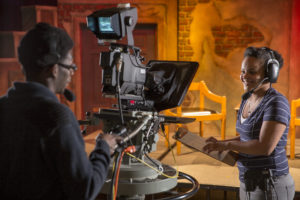Agile education: Why choosing a technical school makes sense

Part 4 in a series.
America’s education system isn’t exactly a well-oiled machine, on any level. According to the Federal Reserve, more than $1.4 trillion in student loan debt remains outstanding – over $600 billion more than the sum total of our national credit card debt.
Higher education, of course, has never been cheap – and there are strong indicators that specialized course programs, training academies and technical schools can focus American students toward lucrative careers in ways that the traditional four-year public colleges don’t. Or can’t.
In all-important STEM (science, technology, engineering and medicine) fields, 21st century education comes with many options. And they don’t all consume four years – or longer – and cost the nest egg.
Carl Lavender manages the Office of Workforce Innovation at Pinellas Technical College, and he’s heard all sides of the argument. “People say ‘Hold on, now, they’ll pay that student loan money back,’” Lavender explains. “Well, they haven’t found jobs enough to pay back those lump sums.
“The smart household knows when the child isn’t a four-year college child: ‘But my child needs to work, so let me give him or her something they can do right now.’ And that’s why technical colleges are incredibly important right now.”
 It’s not your grandfather’s technical school any more, turning out aspiring beauticians and auto mechanics. Between its campuses in St. Petersburg and Clearwater, PTC offers intensive courses – most take a year or less – in Computer Systems and Information Technology, Network Support Services, Coding, Pharmacy Tech, Web Development, Medical Coding, Record Transcribing and Administration, Surgical Technology and other crucial STEM-related careers.
It’s not your grandfather’s technical school any more, turning out aspiring beauticians and auto mechanics. Between its campuses in St. Petersburg and Clearwater, PTC offers intensive courses – most take a year or less – in Computer Systems and Information Technology, Network Support Services, Coding, Pharmacy Tech, Web Development, Medical Coding, Record Transcribing and Administration, Surgical Technology and other crucial STEM-related careers.
These are in-demand careers.
“Between our two technical college campuses, we have 4,224 students enrolled,” Pinellas County School Superintendent Dr. Michael Grego said at an education roundtable in April. “We see 87 percent of these students graduate, and then we see 93 percent of our graduates placed into employment.”
The cost of the PTC education is considerably less than a four-year university tuition.
And the school’s success rate in industrial courses (Welding, HVAC, Electricity, Automotive Service Technology, et cetera) is impressive.
“It’s a smart conversation to discuss technical colleges as a forward-thinking workforce development plan,” Lavender believes.
“And there is this whole national movement regarding the craftsmen-slash-tradespeople that are retiring, and the need for prepared young people to step into those roles based upon the demand for the trades, of course, but also because the four-year degree isn’t the only path to take to self-defining work.”
Twenty-eight percent of PTC students enroll with full college degrees – even Masters and higher – eager to change, or expand, their experience. “For those who’ve been working for a long time and are sick of the rat race – hey, go back to school, pick up certification in a trade and try a new career,” Lavender offers.
New construction, building maintenance and the repair of homes and offices are expected to drive demand for plumbers, pipefitters and steamfitters, according to the Bureau of Labor Statistics.
During his April talk, Grego also praised PTC’s medical assistance programs. “PTC’s pharmacy technician and dental assisting graduates have placement rates above 98 percent,” he said. “We have more job calls than graduates.”
 Elaborates Lavender: “There’s a huge demand for those who follow the allied health career path,” he says. “Hospitals need these folks to be on staff and full time. There are 70 million Boomers in America, and we’re approaching the time in our lives when we may have a prescription or two in our house …
Elaborates Lavender: “There’s a huge demand for those who follow the allied health career path,” he says. “Hospitals need these folks to be on staff and full time. There are 70 million Boomers in America, and we’re approaching the time in our lives when we may have a prescription or two in our house …
“So you’re talking about a boom industry. Go to your local pharmacy and look behind that counter. To that end, our college produces pharmacy technicians who are absolutely necessary to hospitals, clinics and medical offices. Absolutely necessary.”
Established at PTC just a year ago, the Office of Workforce Innovation exists to plug students directly into the local workforce – filling one skills gap at a time. “We help graduate people, and help find them jobs,” Lavender explains. “We help get people certified to work in industry, and we help industry keep their workforce educated and connected.”
More and more, the country’s technical schools – so much more than less-expensive alternatives to “real” colleges – are turning out skilled, viable, competitive members of the contemporary American workforce.
“It’s a whole different conversation now,” Lavender points out. “What’s happening now is that the Sociology major can’t find work: ‘Had I gone to school and gotten certified in welding, or in dot net computer programming, I’d be doing a whole lot better right now with my income.’
“So, to that person who might still say ‘Oh, the trade college? Too bad’ – no, I don’t think so. These are necessary jobs that make life better for people.”







